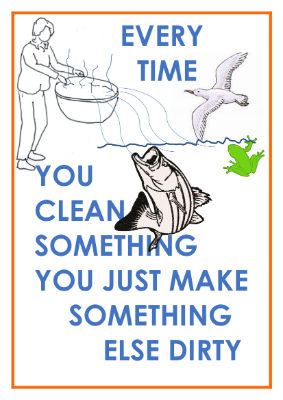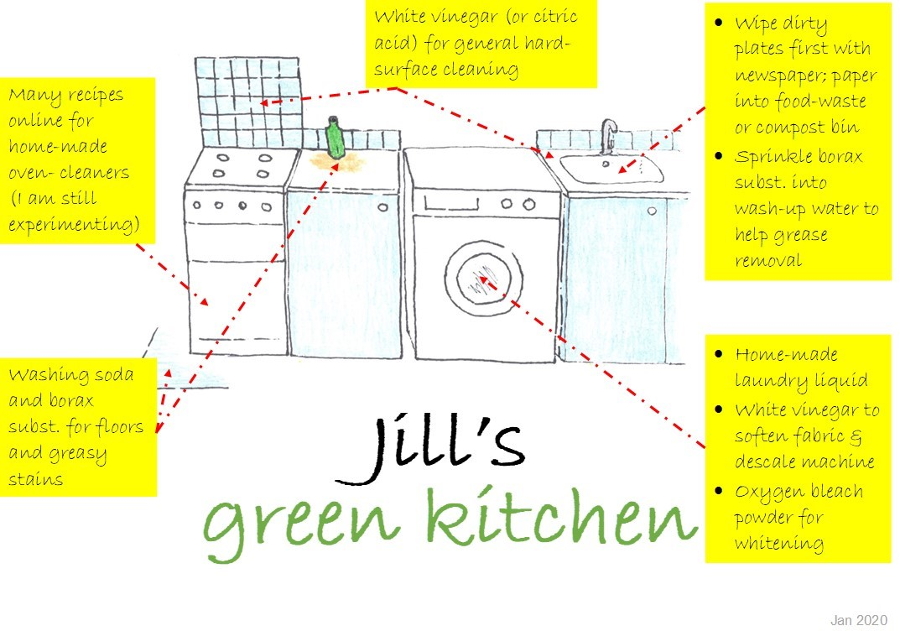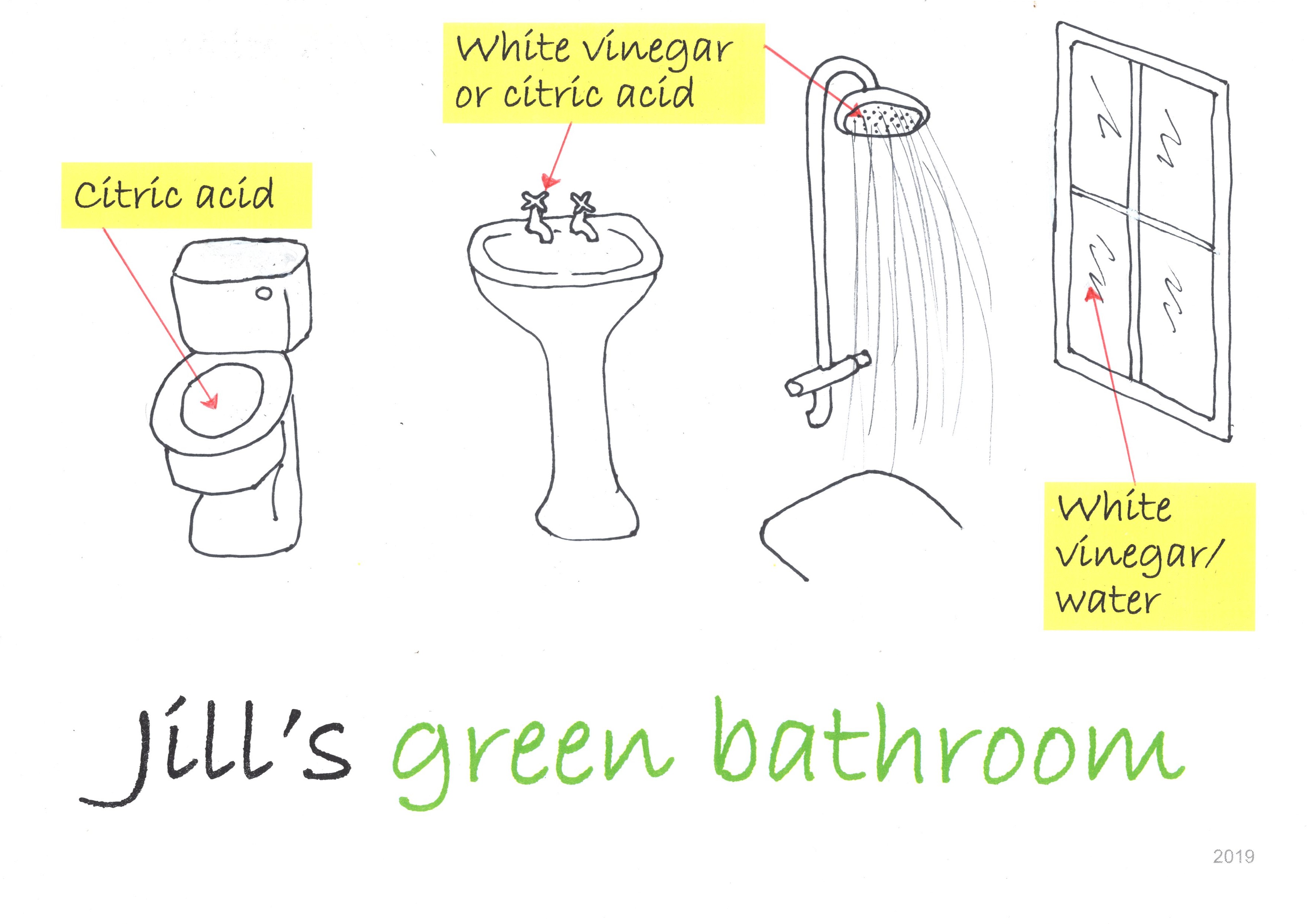
While living in my eco-house, I’ve gradually been moving towards using simpler, non-toxic ingredients for household cleaning. I’m not an expert! and I’d encourage you all to do some researches online; but I’ve put a few ideas below.
See also a couple of pieces that I've collaborated on, about eco cleaning and the consequences of putting horrible stuff down our drains:
Contents:
Basic ingredients
Simple alkaline ingredients
From weaker to stronger:
- Bicarbonate of soda (NB Baking powder is only part bicarb, so you'll need to use at least twice as much)
- Borax substitute (Laundry ingredient, de-greasing (sprinkle into the washing-up))
- Washing soda (Laundry ingredient, strong cleaning)
For whitening laundry (if you must), use oxygen bleach powder. Try Dri-Pak Oxi-Boost, or Vanish O2 powder or various own-brands.
Simple acid ingredients
White distilled vinegar:
- In a spray bottle for glass/tiles/taps etc
- In washing-machine fabric conditioner compartment, to soften fabric and descale the machine. (NB Your clothes will not smell of vinegar!)
Citric acid:
- Stronger, dissolve in hot water; good for loo etc limescale - pour, leave for a few hours, scrub
Back to top
Laundry recipes
Powder is a bit more abrasive, which results in more microfibres getting into the water from synthetic clothing. But it's easier than laundry liquid to store, and laundry liquid needs good shaking before use.
Soap-flakes/grated soap are an important ingredient for both powder and liquid. You'll probably need to get soap-flakes online, e.g. frenchsoaps.co.uk, therange.co.uk. Or you can make them by grating very pure, plain soap. (In contrast, see below for the dire list of ingredients of Dove non-soap) I am still experimenting with the best soap-bars for this.
An alternative is using a similar amount of liquid soap such as Dri-pak.
Here's my recipe for laundry liquid
30ml borax substitute
30ml washing soda
20ml soap-flakes
500ml water
Put the water and soap-flakes into a saucepan, heat over medium heat until fully dissolved (several minutes). Add the borax substitute and washing soda, stir well - it'll thicken. It's very helpful to use a stick blender or electric whisk. Cool a bit, pour into container
(3 tbs per load; shake well before using)
And here's a recipe for laundry powder:
Equal amounts washing soda and borax substitute with some (not too many) soap-flakes
(2 tbs per load)
Or as a simple alternative, mix equal amounts of borax substitute and washing soda in a jar; for a wash, put 2 tablespoons of the mix into the powder drawer, and pour in a tablespoon of Dri-Pak liquid soap
Notes about soap:
Back to soap as an ingredient. Here are the ingredients of Dove bars, as a warning.

Meanwhile, if you're not wanting solid soap for recipes, Dri-pak's liquid soap does come in a plastic bottle (recyclable), but as you only use a tiny amount at a time it'll last you for ages. Here are its ingredients (contrast this with other products at Green and non-green brands):

Back to top
Kitchen and bathroom - moving towards green


Back to top